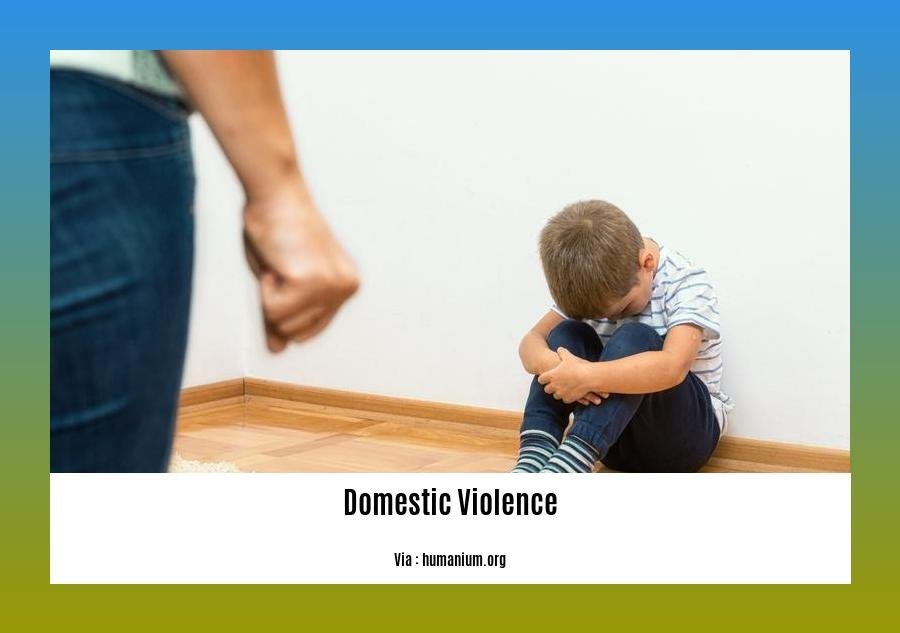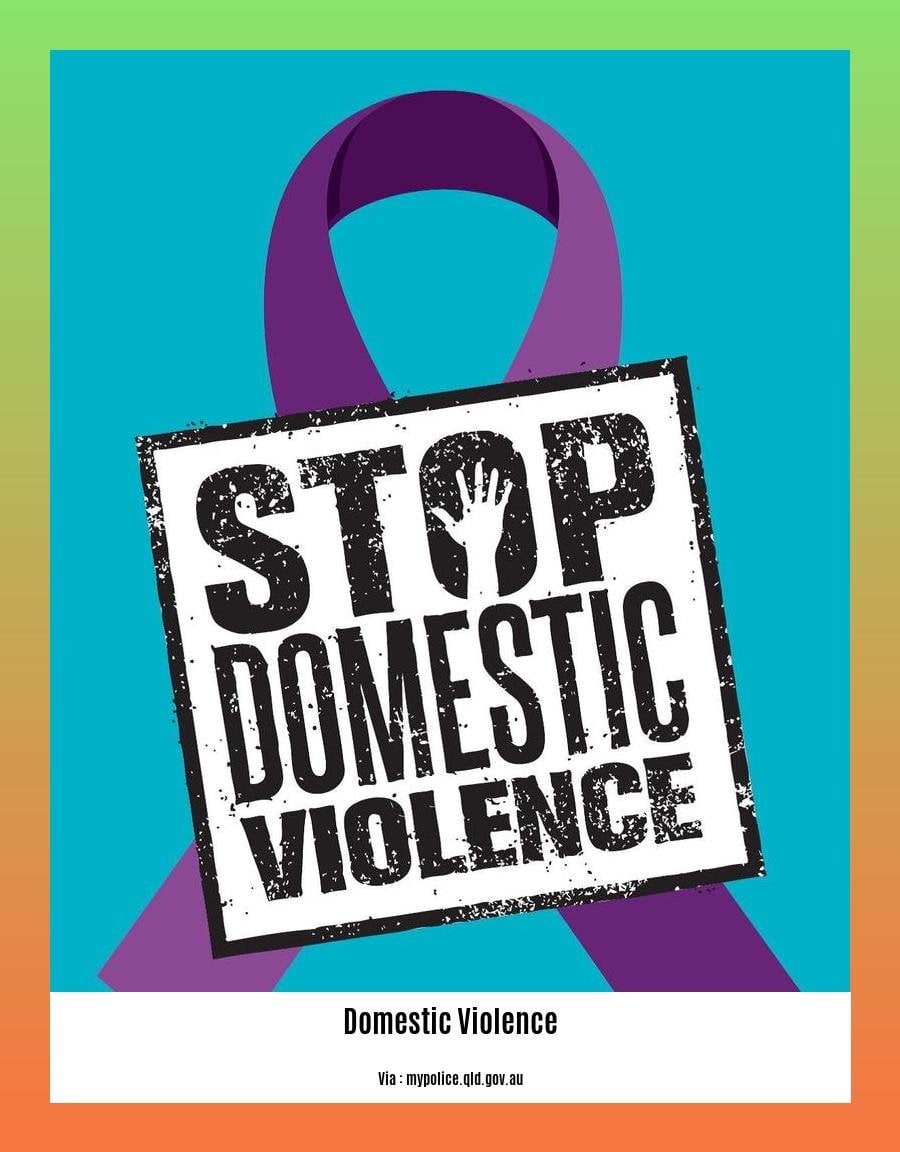Understanding the Complex Causes of Domestic Violence in India: Unveiling the Root Issues
In a country where gender inequality is deeply rooted and societal norms perpetuate harmful stereotypes, the issue of domestic violence in India has reached alarming proportions. This article aims to delve into the complex causes behind this pervasive problem, shedding light on the underlying factors that contribute to the cycle of violence. From deeply ingrained patriarchal norms to economic disparities and lack of legal protection, these multifaceted causes demand our attention and understanding to effectively combat the epidemic of domestic violence that plagues countless households across the nation.
Key Takeaways:
- Domestic violence in India is a significant issue, with high frequency rates.
- The causes of domestic violence in India can be attributed to sociological, behavioral, cultural, and historical factors.
- Sociological factors include anger, stress, and the influence of peers.
- Behavioral factors encompass alcohol and drug abuse, mental health issues, and a history of violence in the perpetrator’s family.
- Cultural factors relate to gender roles, societal norms, and the belief in male superiority.
- Historical factors trace back to the patriarchy and the ingrained belief in male dominance.
- The 2005 Act for the Protection of Women from Domestic Violence provides legal recourse for survivors.
- Support systems exist for women who have experienced domestic violence.
- Intimate partner violence is prevalent in India, with 1 in 3 women likely to experience it.
- The rising graph of crimes against women in India is a concerning trend.
- The National Family Health Survey in India includes a module of questions on domestic violence.
- The UN Women organization works on addressing violence against women in India.
- The BMJ and BMC Public Health journals have published studies on domestic violence in India.
Causes of Domestic Violence in India

Domestic violence is a pervasive issue that has plagued societies around the world. In India, this problem is particularly prevalent, with high rates of domestic violence reported. To truly understand this complex issue, it is essential to explore the various causes that contribute to its existence.
Sociological Factors: Anger, Stress, and Peer Influence
One of the underlying sociological factors that contribute to domestic violence in India is anger and stress. When individuals experience high levels of stress or struggle to cope with their emotions, it can manifest as violence towards their family members. Additionally, the influence of peers can also contribute to aggressive behavior within a domestic setting.
Behavioral Factors: Substance Abuse, Mental Health, and Family History
Behavioral factors also play a significant role in domestic violence. Substance abuse, particularly alcohol and drug addiction, can impair judgment and lead to violent behavior. Moreover, individuals with mental health issues may be more prone to engaging in acts of violence. Furthermore, a history of violence within the perpetrator’s family can increase the likelihood of domestic violence occurring.
Cultural Factors: Gender Roles, Societal Norms, and Male Superiority
Cultural factors deeply ingrained in Indian society also contribute to domestic violence. Traditional gender roles, where women are expected to be submissive and obedient, create an environment where power imbalances exist within relationships. Societal norms that perpetuate male dominance and female subjugation further exacerbate this issue. The belief in male superiority and entitlement acts as a catalyst for domestic violence.
Historical Factors: Patriarchy and Belief in Male Dominance
It is crucial to acknowledge the historical factors that have shaped the current state of domestic violence in India. The country has a long-standing patriarchal system, where men hold positions of power and authority. This ingrained belief in male dominance and control over women provides a foundation for the occurrence of domestic violence.
To combat domestic violence, significant strides have been made in India. The 2005 Act for the Protection of Women from Domestic Violence provides legal recourse for survivors, offering them protection and support. Support systems and organizations exist to assist women who have experienced domestic violence. However, it is important to note that despite these efforts, underreporting remains a significant issue, with only a small percentage of incidents being formally reported.
Intimate partner violence, a specific form of domestic violence, is prevalent in India, with shocking statistics showing that one in three women is likely to experience it. This concerning trend highlights the urgent need to address the root causes and implement comprehensive measures to combat domestic violence effectively.
Efforts to understand and address domestic violence in India have gained attention globally. The National Family Health Survey in India includes a module of questions on domestic violence, providing valuable data for research and policy-making. International organizations, such as UN Women, are actively working towards ending violence against women in India. Academic journals, such as BMJ and BMC Public Health, have also published numerous studies shedding light on this issue.
In conclusion, the causes of domestic violence in India are multifaceted. They stem from a combination of sociological, behavioral, cultural, and historical factors. Addressing this complex issue requires a comprehensive approach that challenges ingrained beliefs, promotes gender equality, and creates a supportive environment for survivors of domestic violence. Only through collective effort and sustained awareness can we strive towards a society free from the shackles of domestic violence.
If you’re looking for the best divorce lawyer in Navi Mumbai, look no further! Our team of experts can provide you with top-notch legal support. Best divorce lawyer in Navi Mumbai
Are you in need of the best female divorce lawyer? We have the perfect solution for you. Our experienced and compassionate female lawyer can guide you through this difficult process. Best female divorce lawyer
Are you wondering if you can sue for legal fees in family court? Our knowledgeable attorneys can help you understand your options. Don’t miss out on valuable information! Can you sue for legal fees in family court
Economic Disparities and Financial Stress

Women’s economic dependence on their husbands or partners often traps them in abusive relationships in India. This dependence is heightened by limited education, lack of job opportunities, and workplace discrimination. These economic disparities create vulnerable situations for women, making it difficult for them to escape abusive environments and perpetuating a cycle of violence.
According to the Protection of Women from Domestic Violence Act 2005, domestic violence encompasses physical, sexual, verbal, emotional, and economic abuse against women by their partners or family members. In India, domestic violence is a widespread issue that disproportionately affects women. A study conducted during the India National Family Health Survey (NFHS-5) revealed that 32% of ever-married women reported experiencing physical, sexual, or emotional violence by their current or former husbands.
Economic abuse, a form of domestic violence, often goes unnoticed but has severe consequences. It involves controlling a woman’s financial resources and denying her access to economic opportunities. Research exploring the link between economic abuse and mental health symptoms discovered a correlation between economic abuse and symptoms of depression, anxiety, and even suicidal ideation.
Socioeconomic inequality plays a significant role in exacerbating violence against women in India. Studies have suggested that higher levels of socioeconomic inequality increase the risk of intimate partner violence. Unfortunately, the relationship between economic inequality and violence against women in India has not received sufficient attention.
To address the issue of domestic violence and women’s economic dependence in India, promoting gender equality, enhancing educational opportunities for women, and creating a supportive work environment are crucial. Empowering women economically could help break the cycle of violence and provide them with the means to leave abusive relationships.
Key Takeaways:
- Economic dependency often traps women in abusive relationships in India.
- Limited education, lack of job opportunities, and workplace discrimination contribute to women’s economic vulnerability.
- Economic abuse, a type of domestic violence, is often overlooked but has severe consequences for women’s mental health.
- Socioeconomic inequality plays a significant role in intensifying violence against women.
- Promoting gender equality, improving educational opportunities for women, and creating a supportive work environment are essential steps towards addressing domestic violence and women’s economic dependence.
Sources:
1. Aran Law Firm. “Causes of Domestic Violence in India.” aranlaw.in
2. BMC Public Health. “Economic abuse and its associations with symptoms of common mental disorder: A cross-sectional study among women attending antenatal care in Ujjain, India.” bmcpublichealth.biomedcentral.com
Lack of Legal Protection and Enforcement
Domestic violence in India is a deeply rooted issue that affects numerous women and children. To effectively address and prevent domestic violence, it is crucial to understand the underlying causes. While there are various factors at play, the lack of legal protection and enforcement stands out as a significant contributor to the prevalence of domestic violence in India.
Limited Impact of Existing Laws
India has enacted laws to combat domestic violence, such as the Dowry Prohibition Act of 1961 and the Protection of Women from Domestic Violence Act (PWDVA) of 2005. These legislations aim to provide legal protection and support to survivors of domestic abuse. However, the effectiveness and impact of these laws are limited due to challenges in enforcement and implementation.
Despite the existence of legal frameworks, there is a lack of awareness and education among both survivors and law enforcement agencies regarding the specific provisions and procedures outlined in these laws. This often leads to a gap between legislation and its practical application, leaving survivors without the necessary support and recourse.
Challenges in Enforcement
Enforcing laws against domestic violence can be a complex and challenging task in India. Various factors contribute to the difficulties faced in bringing perpetrators to justice and providing adequate protection to survivors.
One major challenge is the lack of adequate training and sensitivity among law enforcement officials. Domestic violence cases require a nuanced understanding of the dynamics involved and a gender-sensitive approach. Unfortunately, the training and resources required to address these cases effectively are often lacking.
Additionally, societal attitudes and cultural biases can influence how domestic violence cases are handled by law enforcement. Victims may face skepticism or victim-blaming attitudes from authorities, further discouraging them from seeking legal protection. This lack of trust in the legal system perpetuates a cycle of underreporting and impunity for the perpetrators.
Insufficient Legal Safeguards
While there are laws in place, improvements and advancements in legal protection are necessary to combat domestic violence effectively. It is crucial to address the gaps and limitations that exist in current legislations. This includes strengthening the provisions for preventive and protective measures, as well as ensuring easier access to justice for survivors.
Moreover, there is a need for comprehensive awareness campaigns and education initiatives aimed at empowering survivors to understand their rights and available legal remedies. These initiatives should also focus on educating the public and law enforcement agencies about the importance of taking domestic violence cases seriously and providing appropriate support.
Key Takeaways:
- The lack of legal protection and enforcement is a significant cause of domestic violence in India.
- Existing laws, such as the Dowry Prohibition Act and the PWDVA, have limited impact due to challenges in enforcement and implementation.
- Insufficient training and sensitivity among law enforcement officials contribute to the difficulties in addressing domestic violence cases.
- Societal attitudes and cultural biases can further hinder the effective enforcement of laws.
- Improvements in legal safeguards and advancements in legislation are necessary to combat domestic violence.
- Comprehensive awareness campaigns and education initiatives are needed to empower survivors and educate the public about domestic violence and available legal remedies.
Sources: [^1], Ghosh, B., & Choudhuri, T. (2012) [^2]
Inadequate Awareness and Education about Gender Equality and Respect
Domestic violence in India is a deeply entrenched issue that affects many women and children. To effectively address and prevent domestic violence, it is crucial to understand its underlying causes. One significant cause that demands attention is the inadequate awareness and education about gender equality and respect.
Ignorance of Rights and Available Support
Many women in abusive relationships may not be aware of their legal rights or the resources available to them for seeking help. This lack of awareness can make it difficult for them to recognize the abuse they are experiencing and take steps to escape it. To break this cycle, it is essential to prioritize awareness campaigns that educate individuals about their rights, the signs of domestic violence, and the available support systems.
Limited Education on Gender Equality
Education plays a pivotal role in promoting gender equality and empowering women. However, gender disparities in access to education remain a significant issue globally, with millions of girls and boys out of school. In India, women still account for a significant proportion of adults unable to read. By improving and expanding educational opportunities for girls and women, we can empower them with knowledge, skills, and the confidence to challenge societal norms that perpetuate violence against women.
Promoting Gender Equality in Schools
Schools have a unique opportunity to address gender norms and attitudes early on. Encouraging gender equality initiatives within educational institutions can play a vital role in preventing violence against women. By teaching students about mutual respect, consent, and equality, we can help reshape societal norms and create a future generation that values respect and equality.
Overcoming Traditional Gender Roles
Cultural factors, including traditional gender roles and societal norms, contribute to domestic violence in India. These deeply ingrained beliefs often reinforce the idea of male superiority and dominance. Challenging and overcoming these traditional gender roles is crucial in fostering an environment where gender equality and respect are embraced. This requires comprehensive and inclusive gender education that challenges biased beliefs and stereotyping from an early age.
Empowering Women Economically
Women in India often find themselves trapped in abusive relationships due to their economic dependence. Limited education, lack of job opportunities, and workplace discrimination make it challenging for women to attain financial independence. By promoting economic empowerment through skills training, entrepreneurship programs, and creating a supportive environment in the workplace, we can provide women with the means to break the cycle of violence and gain the freedom to make their own choices.
Key Takeaways:
- Inadequate awareness and education about gender equality and respect perpetuate domestic violence in India.
- Limited knowledge of rights and available support makes it difficult for women to seek help.
- Gender disparities in education hinder progress towards gender equality and empowerment.
- Schools can play a vital role in promoting gender equality and preventing violence against women.
- Challenging traditional gender roles and empowering women economically are essential steps to address domestic violence.
Sources:
- UNESCO. “Gender equality and education.” Available at: link
- Taylor & Francis Online. “Gender and Intersecting Inequalities in Education.” Available at: link
FAQ
Q1: What is domestic violence, and why is it a significant issue in India?
A1: Domestic violence refers to any form of violence suffered by individuals from their biological relatives, with women being the primary victims. It is a significant issue in India due to its high frequency rates, with studies showing that 1 in 3 women in India is likely to experience intimate partner violence.
Q2: What are some of the causes of domestic violence in India?
A2: The causes of domestic violence in India can be attributed to various factors. Sociological factors include anger, stress, and the influence of peers. Behavioral factors encompass alcohol and drug abuse, mental health issues, and a history of violence in the perpetrator’s family. Cultural factors relate to gender roles, societal norms, and the belief in male superiority. Historical factors trace back to the patriarchy and the ingrained belief in male dominance.
Q3: What legal protection exists for survivors of domestic violence in India?
A3: The 2005 Act for the Protection of Women from Domestic Violence provides legal recourse for survivors of domestic violence in India. This law recognizes various forms of abuse, including physical, sexual, verbal, emotional, and economic abuse. It allows survivors to seek protection orders, monetary compensation, and access to support services.
Q4: Are there support systems available for women who have experienced domestic violence in India?
A4: Yes, there are support systems in place for women who have experienced domestic violence in India. These include shelters, helplines, counseling services, and legal aid organizations. NGOs and government initiatives work to provide emotional and practical support to survivors and help them rebuild their lives.
Q5: Is domestic violence underreported in India?
A5: Yes, domestic violence is significantly underreported in India. Only a small percentage of domestic violence incidents are formally reported, indicating a significant gap between the actual prevalence of domestic violence and the documented cases. Reasons for underreporting include fear, stigma, lack of awareness about legal options, and financial dependence on the abuser.
- Star Ring Trends: Etsy vs Amazon - March 28, 2025
- Boost Pollinator Habitats: Baby Blue Eyes Sustainable Farming Guide - March 28, 2025
- Protect Big Black Bears: Effective Conservation Strategies - March 28, 2025
















